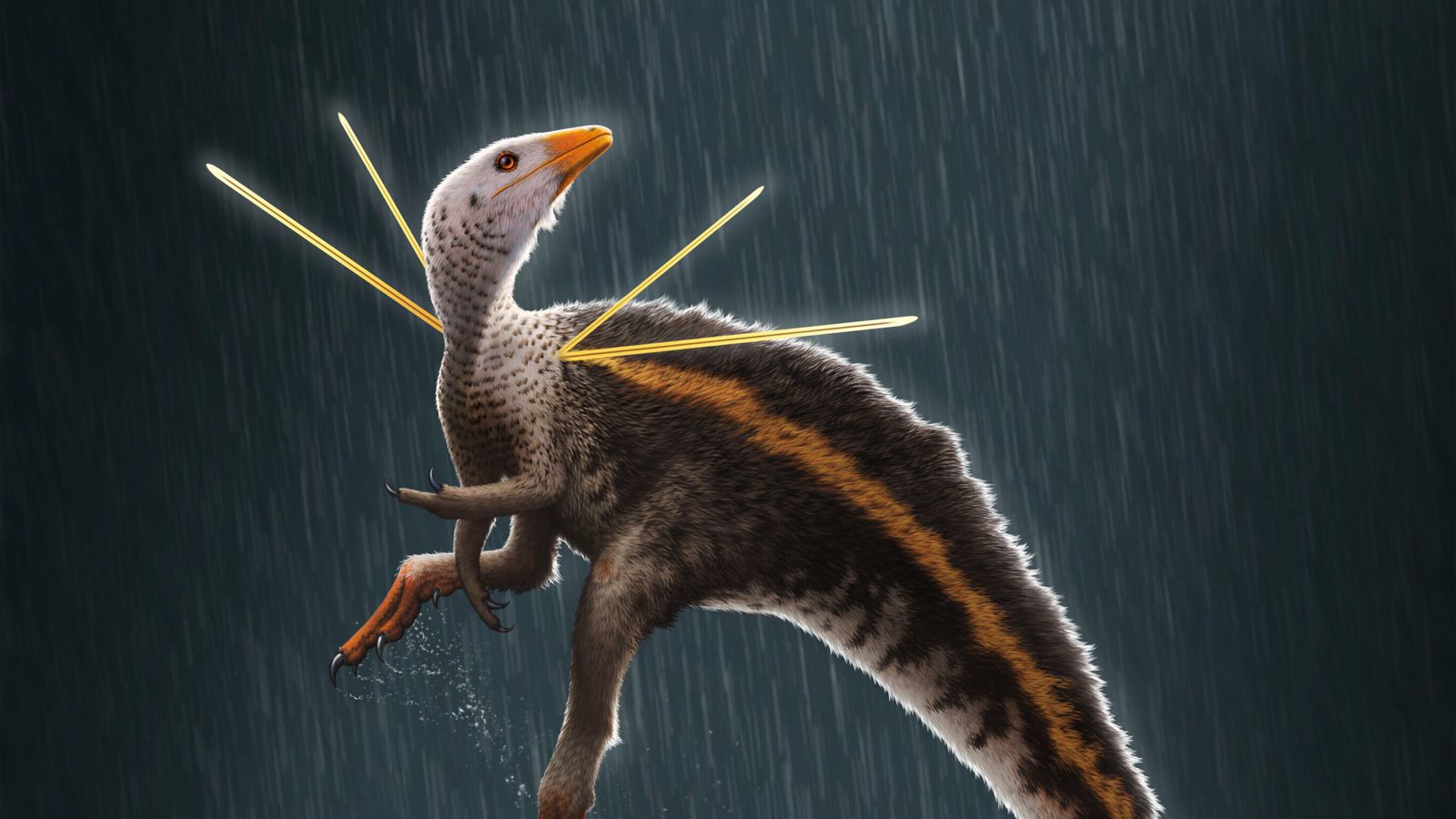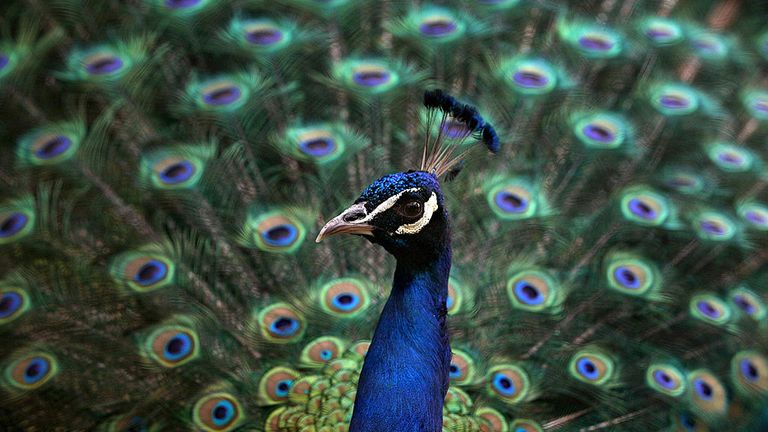Scientists have discovered what they say is “the most elaborately dressed-to-impressed dinosaur ever described”, shedding new light on how birds like peacocks inherited their ability to show off.
The new chicken-sized species lived about 100 million years ago, and had features which have never before been seen in the fossil record, including a mane of long fur down its back and stiff ribbons projecting out and back from its shoulders.
It has been named Ubiraja Jubatus after the Tupi name for “lord of the spear”, in reference to the ribbons on its shoulders, and jubatus from the Latin meaning maned or crested.
The international team of scientists led by researchers at the University of Portsmouth and Germany’s State Museum of Natural History discovered the dinosaur while examining fossils.
Professor David Martill at Portsmouth said: “What is especially unusual about the beast is the presence of two very long, probably stiff ribbons on either side of its shoulders that were probably used for display, for mate attraction, inter-male rivalry or to frighten off foes.
“We cannot prove that the specimen is a male, but given the disparity between male and female birds, it appears likely the specimen was a male, and young, too, which is surprising given most complex display abilities are reserved for mature adult males.
“Given its flamboyance, we can imagine that the dinosaur may have indulged in elaborate dancing to show off its display structures.”
The peculiar ribbons are made from keratin, the same material as scales, fur and feathers, but appear to be structures unique to the animal.
Each of the long, flat, stiff shoulder ribbons has a small sharp ridge running along the middle – and are positioned to not impede freedom of movement in the dinosaur’s arms and legs, so they wouldn’t have limited the animal’s ability to hunt, preen and send signals.
Robert Smyth, a researcher at Portsmouth, said: “These are such extravagant features for such a small animal and not at all what we would predict if we only had the skeleton preserved Why adorn yourself in a way that makes you more obvious to both your prey and to potential predators?
“The truth is that for many animals, evolutionary success is about more than just surviving, you also have to look good if you want to pass your genes on to the next generation.
“Modern birds are famed for their elaborate plumage and displays that are used to attract mates – the peacock’s tail and male birds-of-paradise are textbook examples of this,” Mr Smyth added.
“Ubirajara shows us that this tendency to show off is not a uniquely avian characteristic, but something that birds inherited from their dinosaur ancestors.”
The study is published in the scientific journal Cretaceous Research.

